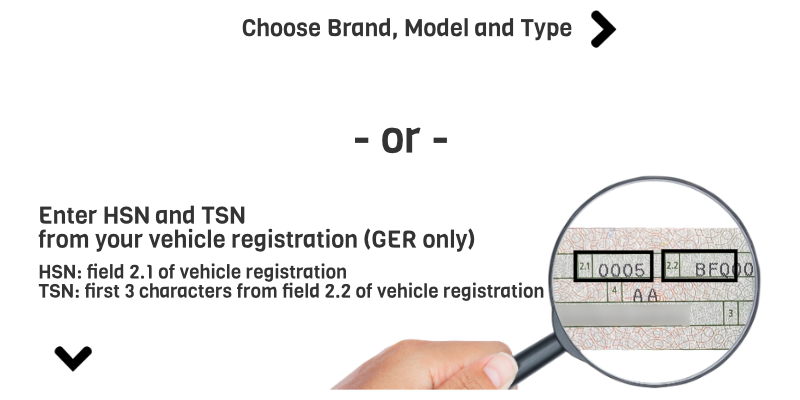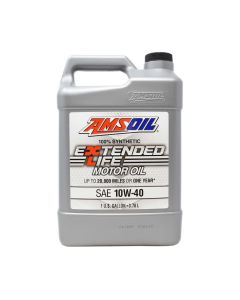API SN Plus, 10W-40 | Car
-
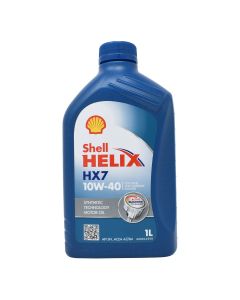 Shell Helix HX7 10W-40As low as €22.15
Shell Helix HX7 10W-40As low as €22.15- ACEA A3/B4 specification
- fpr Mercedes-Benz, Renault, VW/AUDI
- with active cleaning formulation
-
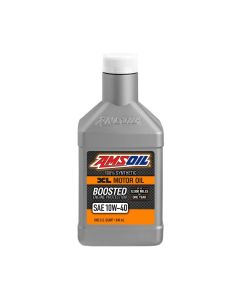 AMSOIL XL 10W-40 Synthetic Motor OilAs low as €12.89
AMSOIL XL 10W-40 Synthetic Motor OilAs low as €12.89- For petrol engines recommended
- Fuel savings and reduced emissions
- Has the ACEA A3/B3, A3/B4, API SN, SM specifications
-
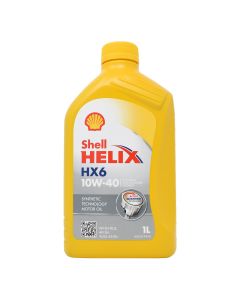 Shell Helix HX6 10W-40As low as €5.50
Shell Helix HX6 10W-40As low as €5.50- synthetic engine oil with API SN license
- MB 229.3 approval
- meets VW / Audi 502 00, 505 00
All lubricants for your car - buy at ATO24!
For reliable, safe and low-wear operation, the right lubricants and operating fluids are essential for a car, be it a passenger car or commercial vehicle. Lubricants and operating materials are mainly classified as liquids, such as oils and coolants, as well as more solid substances such as greases. The wear protection and performance development of a vehicle are subject to several different properties of these substances. An essential function of oil or grease is obvious: the lubrication of vehicle components such as engine, transmission, steering and chassis. This contributes to achieving the desired performance and protects the vehicle from wear and tear. Another, but equally important, function quickly fades into the background: cooling the components. Especially in the engine and transmission, the cooling function of the oil is existential, alongside the coolant in the vehicle's water circuit! Operating fluids such as brake fluid or hydraulic fluids play a key role in the safety of a vehicle. These are also exposed to high thermal and physical loads, which is why consistent performance is important. ATO24 is your competent partner from refilling the engine oil to the complete engine, coolant or transmission oil change. In the ATO24 online shop you can get high quality engine oils and transmission oils for automatic transmissions, manual transmissions, as well as differential and transfer cases in a large selection of over 30 brands at reasonable prices. In addition, our product portfolio offers power steering, hydraulic and brake fluids according to various specifications for purchase, in order to have the right fuel for every vehicle. ATO24 is specialized in offering suitable lubricants for almost every car. With a wide range of products of well-known lubricant manufacturers and OEM products of various car manufacturers, our product range is specialized in oils, greases and other operating fluids for European cars, especially for American cars, US-Cars and passenger cars of Asian brands. A large selection of additives with cleaning, protective or performance-enhancing effects at favourable prices completes the range of products.
Buy 10W-40 Oil: Huge selection, top prices
In the ATO24 online store you get exactly the right 10W-40 engine oil for your vehicle! In addition to top prices, we offer you reliable advice and help you find the right 10W-40 oil.
The viscosity SAE 10W-40 belongs next to 5W-30 to the most demanded engine oil viscosity. But what exactly does 10W-40 actually mean and why are there so many different oils despite the same viscosity? We will clarify these and other questions in the course of this blog article.
What does 10W-40 mean?
10W40 stands for a multigrade viscosity. Correctly written out as 10W-40, the two viscosity indexes given, 10W and 40, refer to all-season use (suitability for winter and summer use). These multigrade oils were developed over 50 years ago and were intended to replace the procedure of having to change oil at summer and winter time. The viscosity specification in cold (10W) and warm (40) viscosity indicates the oil's flowability at high and low temperatures.
10W stands for the flowability in winter (this is where the W index comes from). The value 10 is not a directly measurable value of a certain unit but an index number. The lower the number before the W, the better the flowability at cold temperatures and cold starts. A 5W-30 engine oil therefore has better flow properties in cold conditions than a 10W-40 engine oil.
The number 40 stands for the flowability of the oil at a temperature of 100 degrees Celsius. Again, the lower the number, the lower the viscosity at a temperature of 100 degrees. Accordingly, a 10w40 engine oil is more viscous than a 0W-30 engine oil.
Buy 10W-40: Here's what to keep in mind!
Even if the vehicle manual recommends a 10w-40 engine oil, the right 10W40 oil is not immediately found. When buying a 10W-40, attention must be paid to the prescribed specification and release. They represent the particular chemical properties of an oil.
10W-40 engine oil approvals
As always, your vehicle may require a release in addition to the 10W-40 viscosity. These approvals are listed on the bottle label next to the specifications. The best known approvals are those of BMW (e.g. LL-04), VW (e.g. VW 507 00) and Mercedes Benz (e.g. MB 251.0). The approvals with the engine oil are comparable with a quality seal of the automobile manufacturers. Thus this manufacturer issues a certain chemical characteristic of oils, which must be fulfilled, in order to be permissible for the cars from the own product series.
What engine oil approvals occur together with viscosity SAE 10W-40? Among many others, are common engine oils of the following releases and recommendations 10W-40 engine oils:
- BMW Special Oil 10W-40 Engine Oil
- Mercedes-Benz MB 229.1 10W-40 Engine Oil
- VW 505 00 10W-40 Engine Oil
What is the difference between 10W-30 and 10W-40?
Both viscosities share the winter property "10W", which means that they have the same properties at low temperatures and cold start. The indices 30 and 40 refer to a difference at high temperatures. Thus, the 10W-40 shows a slightly higher viscosity at high operating temperatures. This difference can be advantageous if the engine has oil losses with a 10W-30 motor oil.
API SN Plus Oil vs. LSPI
"Smaller" (downsized) engines with turbochargers and direct injection are widely used nowadays. After all, they make it possible to reduce CO2 emissions. At first glance, this sounds very good, but it has one drawback - the problem of Low Speed Pre-Ignition, or LSPI for short.
LSPI describes the combustion of the fuel-air mixture in the combustion chamber of an engine that takes place before the actual combustion initiated by ignition sparks. This can lead to excessive pressure in the cylinder and, in the worst case, cause serious damage to the engine.
Low Speed Pre-Ignition presents the automotive industry with a major dilemma - on the one hand, they want to meet the ever-growing demand for fuel-efficient vehicles, but on the other hand, the engines specially designed for this purpose are susceptible to LSPI.
What to do against LSPI?
Research on LSPI shows that, among other things, the formulation of the engine oil plays an important role in solving the LSPI problem. For this reason, calls from the automotive industry for engine oils that can counteract the problem of LSPI have been growing.
Now, the American Petroleum Institute (API) has responded to these demands with the API SN Plus specification.
What does API SN Plus mean?
Strictly speaking, the API SN Plus specification is not a completely new engine oil specification, but an addition to the existing API SN and ILSAC GF-5 specifications. API SN Plus has been valid since May 2018 and was developed specifically for "downsized" engines with exhaust gas turbochargers and direct injection systems, which require an engine oil with the API SN specification, in order to counteract the problem of Low Speed Pre-Ignition (LSPI) and to protect vehicles or the engines from LSPI.
As mentioned earlier, API SN + is the most current specification of the API classifications created by the American Petroleum Institute. The API classifications distinguish between gasoline and diesel classifications, which are identified either by the letter "S" for Service or Spark Ignition for gasoline engines and by the letter "C" for Commercial or Compression Ignition for diesel engines. This is followed by another letter that reflects the quality level - the higher the letter, the more demanding the test for the oil.
What is the difference between API SN and API SN Plus?
API SN + essentially corresponds to the API SN specification, but is supplemented by an additional test against LSPI (API Sequence IX Test). This can be seen very well in the following graphic: API SN is marked with the yellow line, while API SN Plus is marked with the red line. The values that must be achieved in the individual tests or sequences in order to obtain the API SN license are identical to the values that are required for the API SN Plus license. As a result, the two lines are mostly on top of each other, which makes the line orange. The only difference between the two specifications is the test against LSPI (API Seq. IX), which only applies to API SN Plus.
API SN Plus is backwards compatible with API SN, which means that engines that require an engine oil with the API SN specification can also use an engine oil with the API SN Plus specification.
API SN+ for which cars?
All cars that have a small (downsized) engine with turbocharger and direct injection technology have a higher LSPI risk. To a large extent, downsized engines are engines with three cylinders and a total displacement between 1.0 to 1.5 L.
If an engine of this type requires an engine oil with the specification API SN, then it is recommended to resort to an engine oil with the specification API SN +, due to the backward compatibility with API SN, in order to prevent potential low speed pre-ignition and protect the engine from LSPI. The vehicle owner's manual can be used to determine if an engine oil with the API SN specification is needed.
API SN Plus and GM dexos
API SN Plus, along with the GM dexos 1 Gen. 2 release, is the first step in the fight against LSPI. At the end of 2019 / beginning of 2020, the ILSAC GF-6 specification is expected to put even more focus on protection against LSPI.


